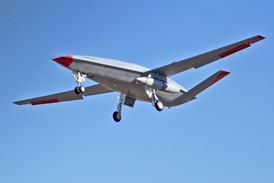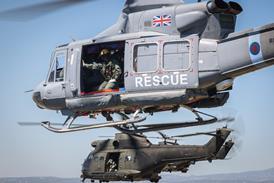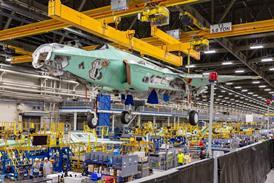Airlines and airports will increasingly work in partnership rather than as adversaries, argues Jon Woolf, director of Routes and head of network strategy at consultancy Airport Strategy and Marketing (ASM).
Network development has historically been perceived as a core in-house function by airlines of all types. However, expanding a network also promises to be one of the great challenges to be faced by an industry where the availability of capital is becoming ever more scarce and balance sheets are being drained of cash every day. In such an unstable operating environment, the commercial relationship between airlines and airports assumes a critical dimension, and airports are taking on an equal role as a key driver of network development.
Airline-airport relationships have in the past been fraught, and at times have erupted into outright hostility. Airports have been accused of making monopoly-type profits from beleaguered airline customers, while airlines have, on occasion, underestimated the commercial pressure on airports. However, beneath the very public accusation and counter accusation between IATA and the Airports Council International, meaningful relationships do exist at a day-to-day working level.
Airports have a duty to deliver in this area. For some time, they have been attempting to knock on airline doors with marketing messages that have often been unfocused and, at times, implausible. Marketing managers, one would assume, are supposed to understand and effectively communicate market opportunities. Yet for many years, airports have regurgitated sales campaigns with their focus clearly on infrastructure rather than the markets they can potentially serve. It is fairly safe to say that few airlines, if any, have decided to serve an airport on the basis of the number of ticket and check-in positions. More recently, however, airports have grasped the nettle, and through the medium of more sophisticated marketing, are starting to add real value to airline network planning. Branding strategies and sophisticated communication campaigns are now being used to back up costly market research.
Marketing intelligence
For instance, network carriers are now becoming accustomed to airports using exactly the same core marketing information data transfer that they rely on for analysis of future markets for expansion. While this may take away some of the previous (and in some cases closely guarded) mystique, it ultimately saves time and money for both parties by focusing on what presents a realistic market opportunity and what can be quickly discarded.
European low-cost carriers in particular have become extremely adept at devolving core market research functions to airports - in effect "licensing" them as trusted providers of data and information. It would appear that the onus is gradually switching from airline to airports to demonstrate a sound business case for new services. On the basis that in many cases, an airport's knowledge of its own market place is second to none, this could be viewed as simple prudence on the part of the airlines. As airline headcounts continue to fall, their ability to understand a wide variety of disparate markets becomes more open to question - and a reliance on the local knowledge of airports may start to turn into a real dependence.
The issue of fees and charges is an inescapable feature of the airline-airport relationship. Current market conditions have naturally focused airlines on re-examining every element of the cost base, including airports. No doubt the recent landing fee reductions at airports such as Singapore and Kuala Lumpur will help to ease short-term financial pain. However, the current airline trend for vigorous attempts to reduce (or altogether remove) airport-related fees has to be seen in relation to their overall cost structure. ASM has observed that a number of European flag carriers have recently returned "problem" routes to profitability through revised schedules (reducing overnight crew costs, for instance) and changing flight crew accommodation. All these were achieved without touching airport costs, which were far from excessive.
At the same time, airport management teams with a dogmatic approach to pricing will potentially be faced with stagnant or diminishing route networks. The events of the last 20 months may have potentially put "natural" market growth back by up to four years. An element of risk-sharing may now be necessary simply to make up lost ground and return networks to their summer 2001 status. It is not just low-cost carriers looking for a deal - some US long-haul operators will not now touch new markets without a third-party revenue guarantee, invariably aimed at the airport.
In the area of risk-share, now the common denominator behind any new route launch, airports are also providing added value to the relationship beyond the simple provision of incentives for airlines. Increasingly, airports play a vital role as conduits between airlines and other third-party beneficiaries such as tourism and economic development agencies. The devolved government for Scotland, for instance, has recently approved a national route development fund of over £6 million ($9.7 million) targeted at certain types of routes that will benefit the Scottish economy over the next three years, supported by a variety of Scottish airport management teams.
This may well be a sign of things to come - with airlines developing specific route networks in response to the influence and involvement of third parties - predominantly with airports, rather than despite them.
Routes 2003
The Routes network planning event, backed by Airline Business, is heading to the Scottish capital of Edinburgh this year, and is on track to pass the 1,000-delegate mark for the first time.
Routes 2003 will follow the usual format, based around a series of one-to-one discussions between airline network planners and airport marketing executives.
Nearly 500 airport and observer registrations have been made and the organisers expect 200 airline tables.
The event takes place on 7-9 September at the Edinburgh International Conference Centre, with new features including product briefings for delegates and an Internet café.
To obtain more details of Routes 2003
Contact Nicki Hollick
Tel +44 161 234 2730
Fax +44 161 234 2737
e-mail nicki.hollick@routesonline.com
www.routesonline.com
Source: Airline Business
















